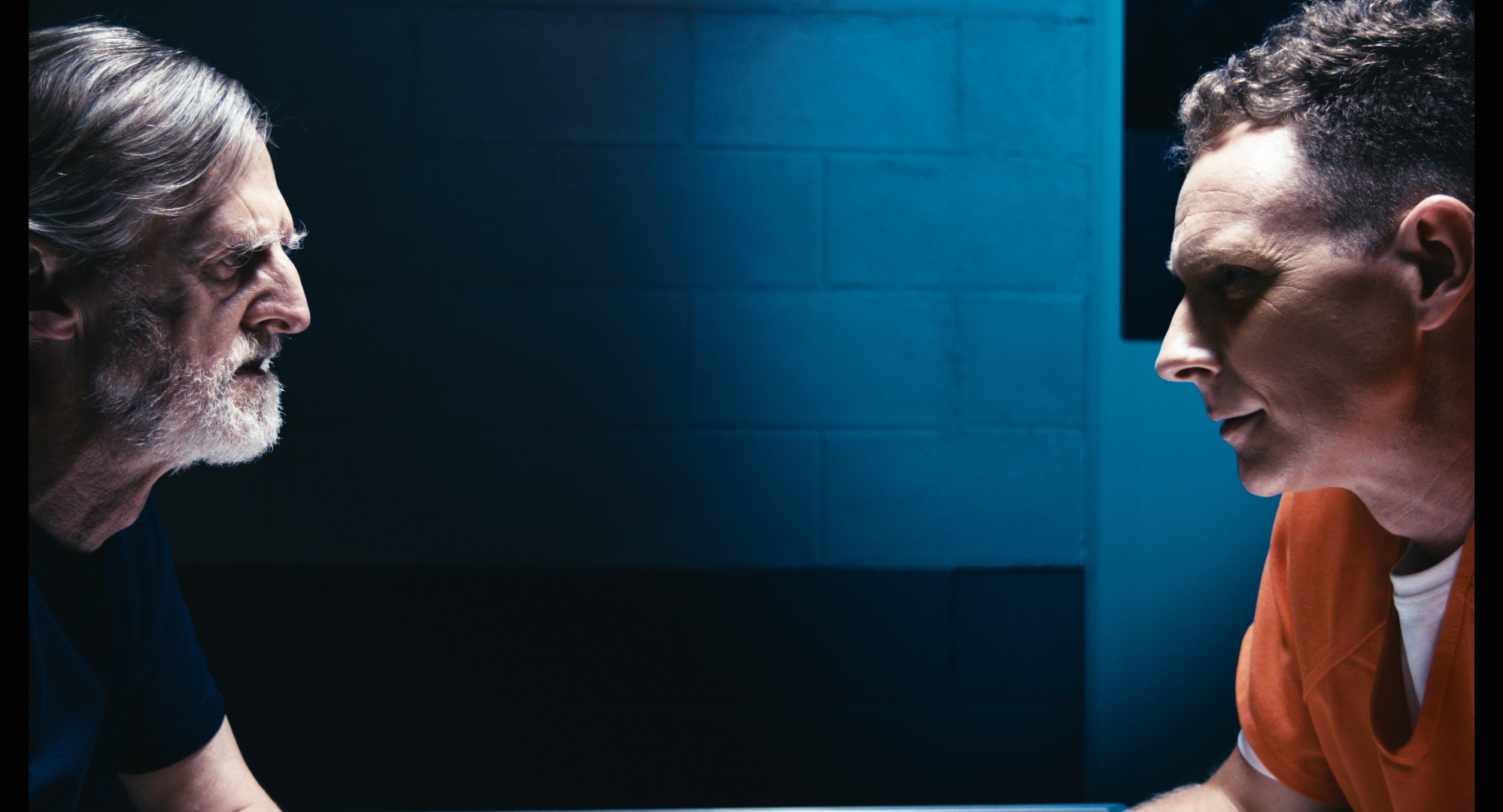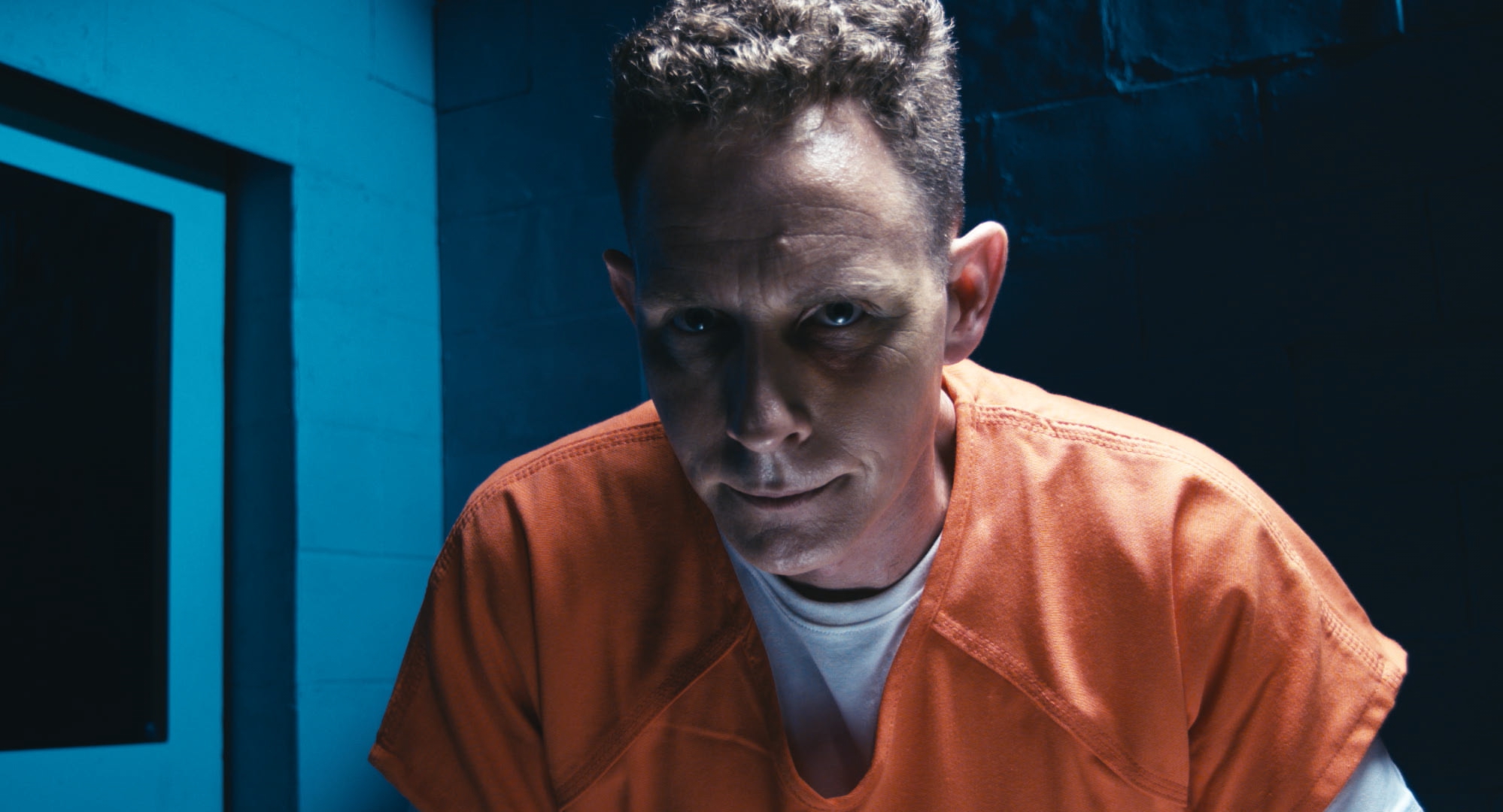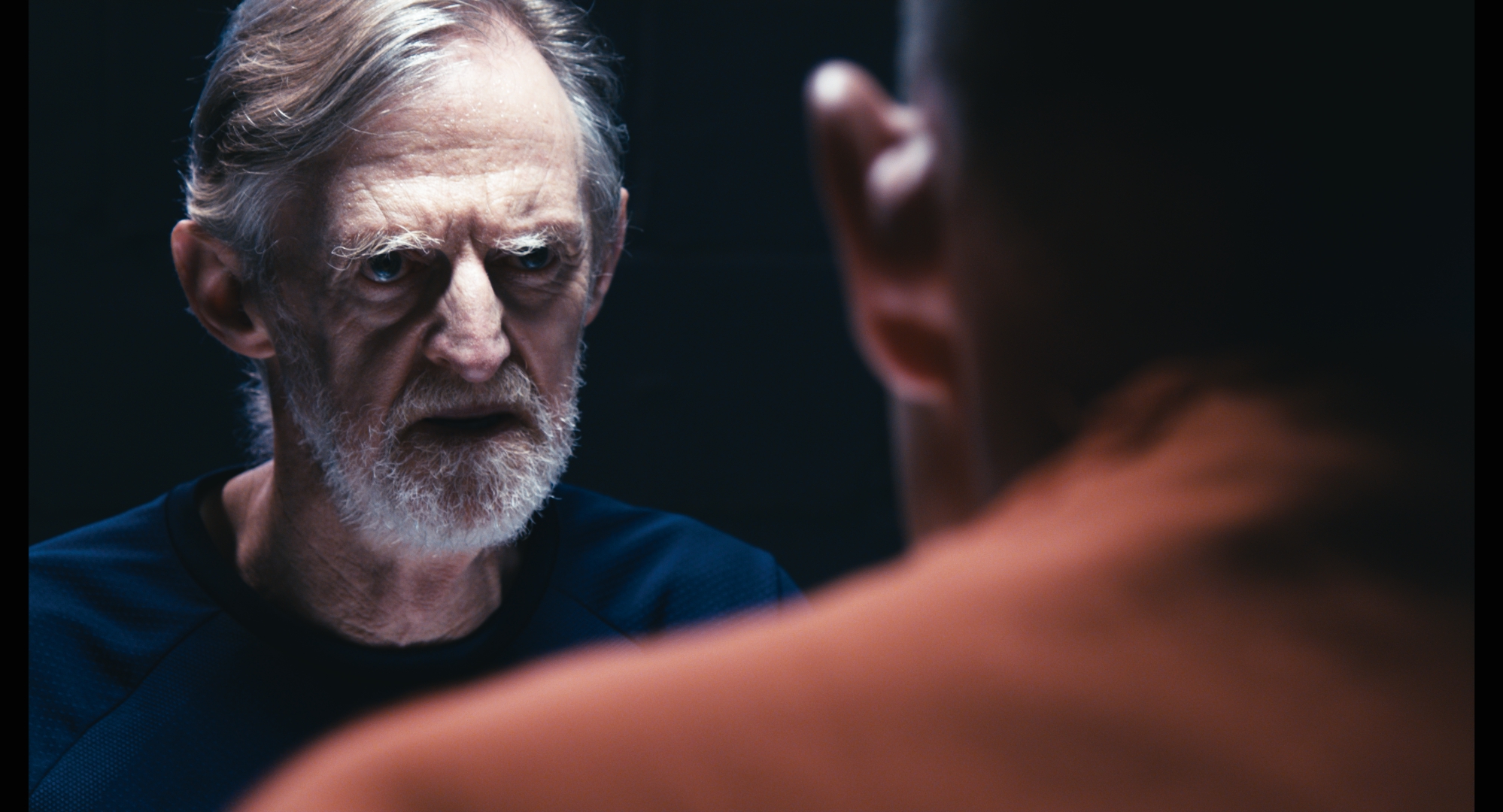
Phil, serving a prison sentence for assaulting his wife, speaks to a chaplain, John, about the events leading up to his crime. But in order to help Phil, John must decide if he can risk sharing his side of the story.
THE SIEGE-TRAILER
THE SIEGE
The Siege
Date of Completion: OCTOBER 2018
Country: Australia
Shooting Format: RAW video
Running time: 15 mins 55 secs
Genre: Drama
Language: English
JOHN
We don’t diminish pain, we acknowledge it and thereby sanctify existence.
PHIL
But mostly no one does, no one wants to deal with it, so we’re forced to swallow that pain instead. I mean, it gets so it seems like you’re eating your own shit. You keep absorbing it. It penetrates your soul and instead of strengthening, it weakens it. You say ‘look within’, but what you’re seeing is not volatile or beautiful but something dull: concrete cancer and the rotten skin stretched over it, hiding something very ordinary.
JOHN
What I’m really asking is, how are you responsible?
PHIL
It’s my job, isn’t it? It’s any man’s job. To do the right thing by your wife. For better or worse. Or worse.
Q & A
What was the initial idea for the film?
The idea of a conversation as a ‘boxing match’ with self-knowledge as the prize.
Was the film intended as a study of violence?
Not so much the representation of violence as a discussion of its root causes. The spiritual or psychological basis of depression, dependence and resentment in relationships.
Why set the film in a prison?
So as to present clear archetypes easily read as symbols of crime and punishment, confession and spiritual knowledge; also to magnify and compress the action and express the claustrophobia of a state of mind: energy which is curtailed, repressed, hidden.
Describe the process of rehearsal.
The actors, Don Bridges, David Kambouris and I rehearsed for three days at the Meat Market in North Melbourne. Over this period we asked every conceivable question of the script. When we thought all the questions had been answered, we asked more. The actors spearheaded this process because they needed to establish and refine the character’s stories and form a clear timeline of events. We discussed religion, relationships. Don had just visited Israel and Palestine, and we explored religious questions, trying to comprehend the original depth and power of these doctrines.
What were some of the challenges of a dialogue based film?
The biggest challenge was finding the action given a conversation is such an intimate event. The rehearsals were essential in understanding when and where specific emotional arcs would begin and end, given these moments might consist only of a change in facial expression. (see Director’s Notes)
What camera was used and what were some of the technical challenges?
Simon Imberger shot on the original Blackmagic Cinema Camera, shooting 2K RAW. After my previous short film, True Estate, I wanted to deepen my knowledge of shooting and editing RAW footage with a cinema output in mind.
Where was the film shot and how long was the shooting schedule?
We shot over four days inside the Verve Actor’s studio, a rehearsal space in the Nicholas Building, Melbourne. This space is a beehive of artist’s studios, galleries and artisan outlets. The building is situated just beside the construction site for a new underground train network so there were real challenges for Rohan Bayley recording sound in this environment. This called for mostly night shoots.
What were some of the surprises of the shoot?
Because we were operating as a crew of four, almost everything was an education. There were no strict partitions between roles, apart from the obvious skill sets. I was grateful to learn from our makeup artist Katie Dobbin the way in which makeup is used to tell a story. It not only highlights a physical state, but illuminates the emotional arc of a character.
After the first screening at ACMI, Melbourne, for cast, crew and friends, what are your feelings about the film? What did the audience take away after seeing The Siege?
I was relieved the dialogue was OK. The audience was fine with it and ready to listen.

director’s notes
“It was quickly noticed that the word was a sound before it was a sign, and as an immediate consequence, it was agreed that speech had to be treated as a way of being, not of revealing.”
Eric Rohmer
For a talking cinema, 1948
Dialogue, as it is known in cinema, is that part of the mise-en-scène where the actor speaks. It is a somewhat blank description because it suggests an actor speaks to another actor, rather than communicates. Or if they do communicate, it must be at a premium: dialogue is understood not so much as an exchange of ideas, but as an efficient form of signposting.
Eric Rohmer wanted to advance the idea of a new ‘talking cinema’. Films where the dialogue was elevated to the heights of music, poetry and philosophy. He wanted to extend the range, the signifying power of cinematic dialogue. As Rohmer understood it, cinema still considered dialogue as more or less another sound in the room, perhaps at most the audible equivalent of the caption card in the silent film. Dialogue should not trespass upon the primacy of the action. We should hear, but we should not have to listen. After all, the era of silent cinema perfected visual speech. Jean Renoir called the close-up the jewel box of the cinema. It was a precious asset which the director held in reserve and only opened up on special occasions, to reveal to the audience the true emotional heart of a film, sparkling in the eyes and face of the actor: the cinematic equivalent of the soliloquy in classic drama.
In the end, for dialogue to work at all in film, it must engage in a type of dance with the action, what you see and what you hear the dancing partners, one sometimes leading, sometimes being led. Above all, speech is action: it’s what the body says to get what it wants and it's also what the body expresses when it begins to think and dream. And the body speaks in different ways. It is the director’s job, said Mike Nichols, to translate psychology into behaviour. In rehearsal for The Siege, we quickly discovered the playing space we had to activate lay, as it were, between the two actors, in the exchange across the table and in the changes in the actors’ faces. This was still an action film, but it was to be an action film in miniature.
For John, the prison chaplain, listening is productive. It is the space in which assumptions are tested and lessons learnt. For Phil, a prisoner, convicted for assaulting his wife, conversation is a contest; listening is a form of submission or defeat. To convince is to be victorious. If Phil wins the debate, he will be able to justify his actions. But rhetoric is not insight. Even wisdom is a form of self-deceit. Rhetoric conveys the illusion of power through the insistence of speech. Rhetoric enables Phil to justify himself, but it does not necessarily help him to understand others. For instance, on meeting the prison chaplain, Phil assumes a man of faith adheres to dogma and yet he narrates his own version of events leading up to the assault as if it were the only version possible. Phil wants intelligence and reason to triumph because he cannot conceive of an alternative.
John is concerned with the movements of the soul. Reason is only the first step. Because of his investment in the emotional lives of others, John's sense of self has all but disappeared; it has become almost a fiction. John’s idea of social responsibility seems onerous to Phil because it lacks a selfish, personal context. Talking to Phil reminds John that the human material, even if spiritual in nature, is limited. John surveys the limits of tolerance and the way in which anger and self-righteousness betray a form of impotence. But he also knows what power exists in the spiritual life of a person and how it may be harnessed in structures which liberate: love, compassion, friendship.
Phil has barricaded himself inside his own self-belief. If he stopped claiming all rights to himself, he would end the siege: other people would be able to reach him. A new reality would swarm the ramparts and renew him. But first he must abandon his defences. Then the conversation may begin.
CAST & CREW
DON BRIDGES (JOHN)
I have been acting for 53 years and professionally for 44 of those, joining Actors Equity in 1973. This year has been a good one for me. I have done 5 episodes of Jack Irish as Dougie Smalls; a feature film, Judy and Punch, (with Mia Wasikowska and Damon Herriman) where I played the fire and brimstone spitting Preacher. I performed in The Dumb Waiter by Harold Pinter with John Wood (Chapel off Chapel); and Troll Bridge, where I played Cohen the Barbarian, is finally finished after 8 years, and about to hit the festival circuit.
DAVID KAMBOURIS (PHIL)
David is a Melbourne actor who’s been in the game for 26 years, kicking off his professional career at 14. It has taken him around Australia and overseas. David works in film, television and theatre. His latest work has been on Meg McNena’s play Mud and Blood, a WW1 play about Australian war hero Harold ‘Pompey’ Elliot.
www.melissarosemanagement.com.au/?projects=david-kambouris
SIMON IMBERGER (CINEMATOGRAPHY)
Simon Imberger is a Melbourne-based filmmaker and musician. He has been making films and music since the age of twelve and is a graduate of the VCA Film and Television school, where he won the C. Robert Fine Memorial Award for Best Script From a Graduating Student. In 2012 he wrote and directed his first feature film The Curable which screened in various festivals. He is currently in post production on a short horror film which he wrote and directed, The Twins of Berlin, which takes in locations from Paris, Copenhagen and Berlin.
ROHAN BAYLEY (SOUND RECORDING)
Rohan Bayley is a musician, composer and educator who has been working in Melbourne for the past twenty years. Rohan was one of the last students to study composition at Latrobe University and has continued to explore new music. He plays a variety of instruments, with a particular focus on guitar and viola da gamba.
KATIE DOBBIN (MAKEUP)
CALLUM PERRY (SCRIPT/DIRECTION/EDIT)
Callum Perry makes videos, paintings, sculptures, screenplays and poems. He started making Super-8 films when young, dabbled in the computer animation industry and produced various art-based videos. He continues his studio practice, has held exhibitions of his work and self-published several collections of poetry. To view a selection of videos, writing and artwork, please visit: callumperry.com
The Siege was developed in part at Meat Market, Melbourne
CONTACT
Please let me know if you have any comments, questions or enquiries about the film. Many thanks, Callum Perry. (Producer/Director)





